Imagine stepping into your own private sanctuary, right in your backyard—an inviting space where you can unwind with a book or host a cozy gathering under the stars. Creating a personal outdoor retreat with a pergola is not just a luxury; it’s an achievable dream that transforms your outdoor space into a haven of tranquility and style. Whether you’re a beginner eager to enhance your patio or a seasoned homeowner looking to add a touch of elegance, a pergola offers endless possibilities to craft an inviting escape.
In this article, you’ll discover how to choose the right materials, styles, and accessories to suit your space and needs, ensuring your pergola becomes the centerpiece of your outdoor oasis. We’ll guide you through practical steps to design a secluded nook that reflects your personality and provides the privacy you crave. With our expert tips, you’ll be well on your way to creating a retreat that feels like a world away—right at home.
Choose the Perfect Pergola Design
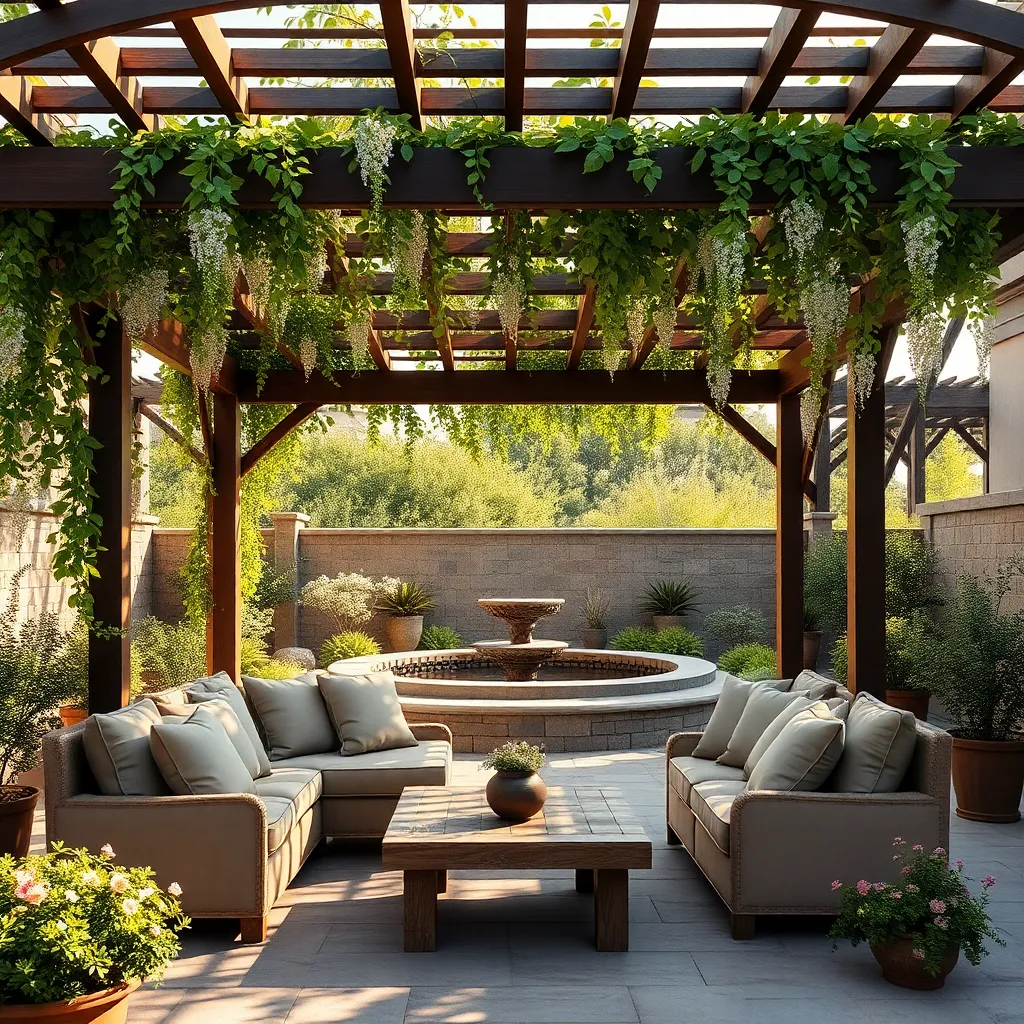
When choosing the perfect pergola design, consider both functionality and aesthetics to create a harmonious outdoor retreat. For beginners, a simple wooden pergola can be an excellent starting point, offering a classic look with natural appeal. Opt for pressure-treated wood or cedar for durability and resistance to the elements. If you’re aiming for a more modern style, consider aluminum or steel options; they require less maintenance and provide a sleek, contemporary finish. For a more advanced touch, integrate climbing plants like wisteria or grapevines to create a lush, shaded canopy that evolves with the seasons.
Incorporate key design elements such as adjustable louvers or retractable canopies to enhance versatility and comfort. These features allow you to control sunlight and shade, making your space adaptable to various weather conditions. Ensure your pergola proportions are balanced with your outdoor area; a common guideline is to make the pergola slightly smaller than the patio or deck it complements. For added flair, consider built-in lighting or a hanging lantern to extend usability into the evening. Beginners can start with solar-powered options for ease, while experienced DIYers might explore hardwired solutions for a more permanent setup.
Select Durable Materials and Finishes
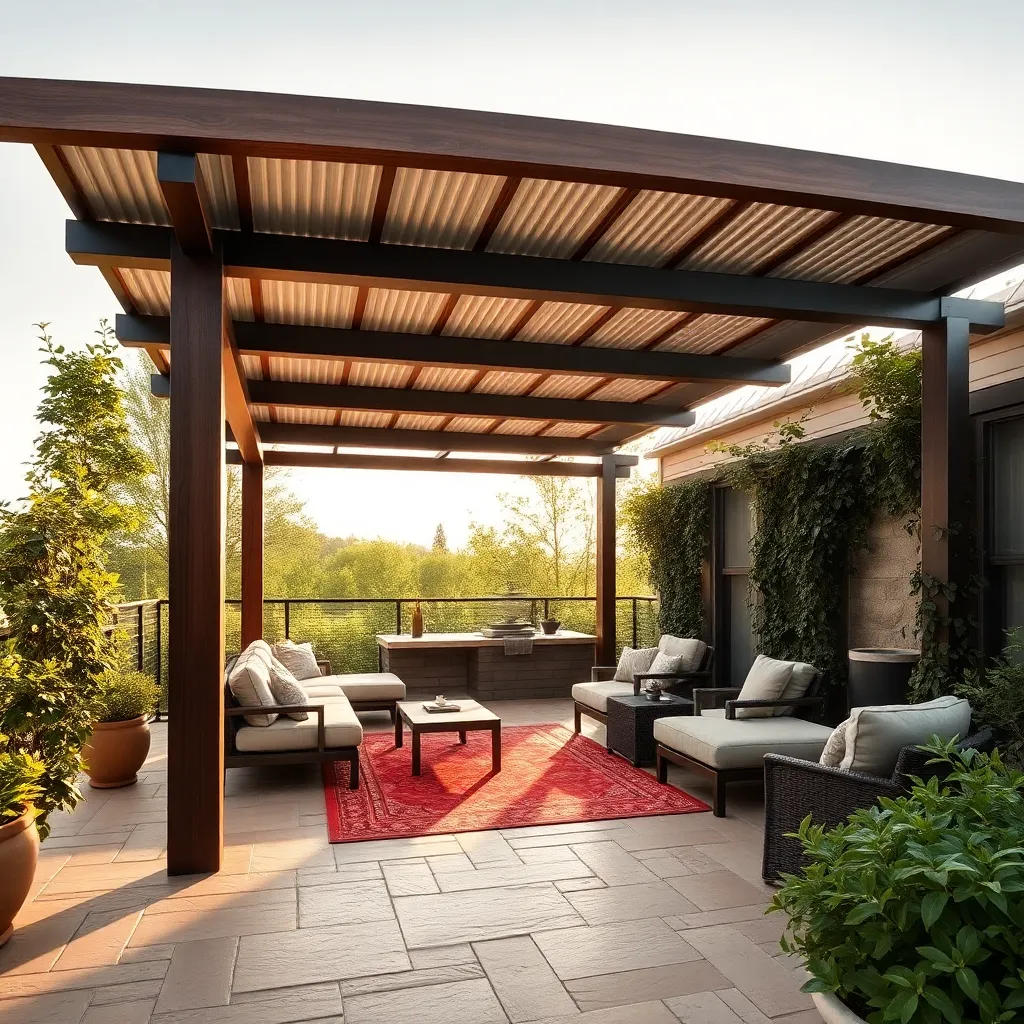
When selecting materials for your pergola, prioritize durability to ensure your structure withstands the elements over time. Consider using weather-resistant woods like cedar or redwood, which are naturally resilient against decay and insects. Metal options such as powder-coated aluminum or steel offer excellent strength and require minimal maintenance. For a more budget-friendly choice, pressure-treated pine can be a viable option, though it may require additional finishes to enhance its longevity.
Finishes are crucial in protecting your pergola and enhancing its visual appeal. Applying a high-quality sealant or stain can help preserve the natural beauty of wood while providing a protective barrier against moisture and UV rays. For metal pergolas, select finishes that prevent rust and corrosion, such as galvanization or specialized coatings. Consider incorporating UV-blocking polycarbonate panels on the roof to add extra shade and shelter from rain, ensuring your outdoor retreat remains comfortable and inviting throughout the seasons.
Plan and Prepare the Installation Site
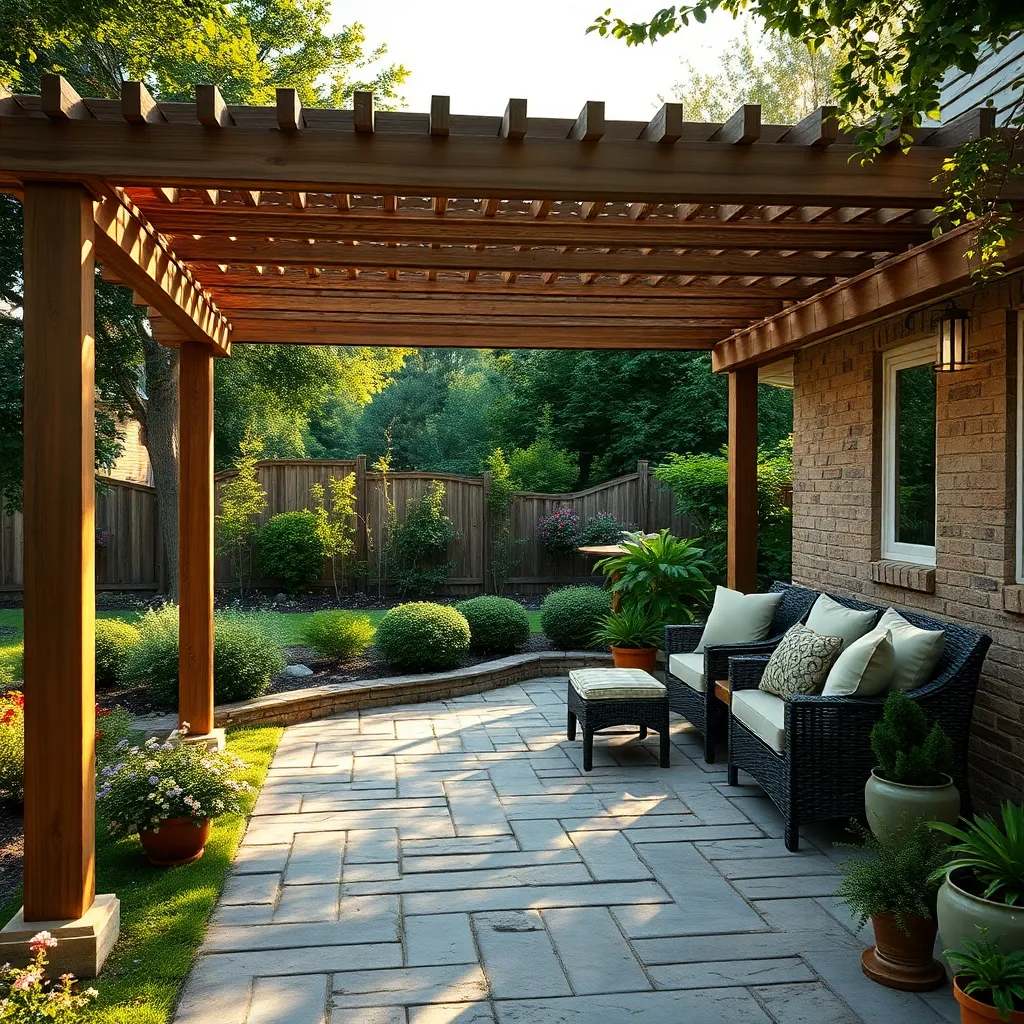
Before installing your pergola, assess the site to ensure it accommodates your vision. Start by identifying a flat, stable area in your yard that receives the desired amount of sunlight and shade throughout the day. Use a tape measure to determine the exact dimensions you need, keeping in mind that a standard pergola is typically 8 to 10 feet high and can vary in width and length depending on your space requirements. Make sure to check for any underground utilities by calling a local service before you dig, ensuring safety and compliance with local regulations.
Next, consider the foundational support your pergola will need. For a sturdy structure, plan to use concrete footings at least 12 inches deep for each post, which will help withstand wind and weather conditions. If you’re in a region with heavy rainfall or frost, you might aim for deeper footings, around 18 inches. Use a level to ensure each post is plumb before allowing the concrete to set. For added stability and style, choose materials like pressure-treated wood, cedar, or aluminum, which offer durability and resistance to the elements. By carefully planning and preparing your installation site, you’ll set a solid foundation for creating a beautiful and lasting outdoor retreat.
Assemble and Secure the Pergola Structure
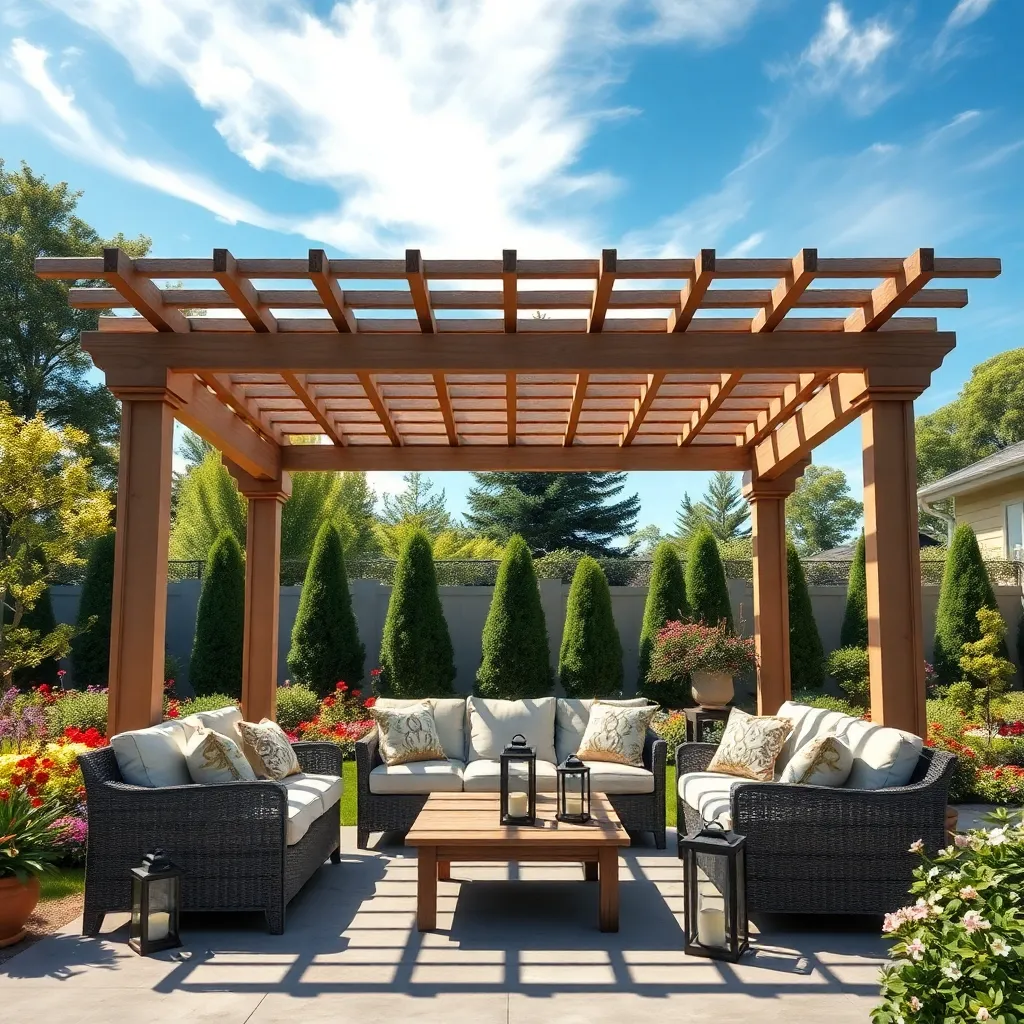
Once your installation site is ready, begin by gathering the necessary materials for your pergola. Use durable woods like cedar or redwood, known for their resistance to weather and pests. If you’re opting for a metal pergola, ensure it’s powder-coated steel or aluminum to prevent rust. Dimensions should fit your space, typically around 10×10 feet for a standard design. Assemble the frame by connecting the beams and rafters, ensuring everything is level and square. Precision during assembly will enhance both stability and aesthetics.
To secure your pergola, anchor it firmly to the ground using concrete footings or ground spikes, depending on your surface. For wooden or composite decking, fastening directly into the deck structure with lag bolts is advisable. Advanced DIYers might consider adding decorative elements like climbing plants or retractable fabric panels for shade and privacy. Remember to periodically check connections and tighten bolts to maintain the pergola’s integrity over time. This ensures your outdoor retreat remains a solid and inviting space for relaxation.
Add Privacy Features and Decor Elements
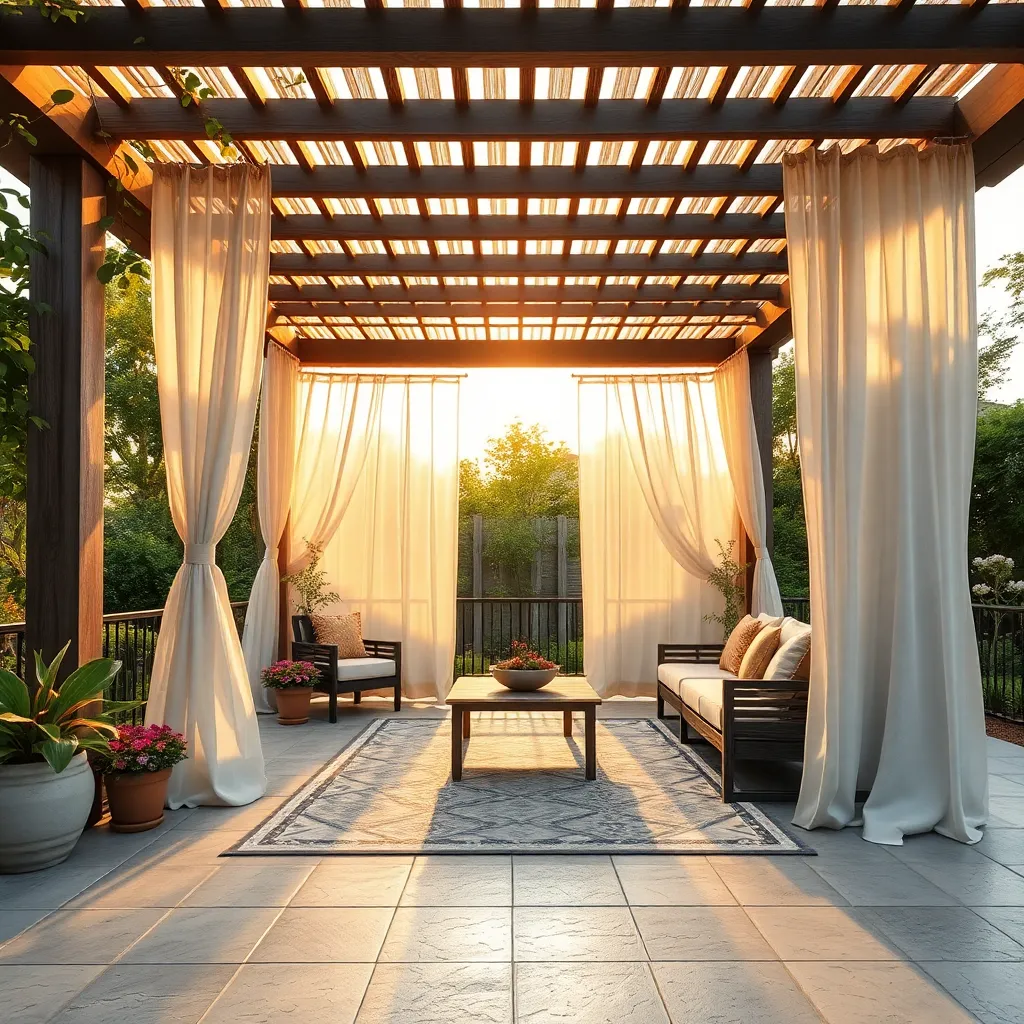
To enhance privacy, consider adding curtains or screens to your pergola. Outdoor fabric curtains, available in weather-resistant materials, can be easily installed using curtain rods or wire systems. This simple addition not only provides seclusion but also softens the space aesthetically. For a more permanent solution, install wooden or bamboo screens, which can be customized to fit your pergola’s dimensions, offering both privacy and a unique design element.
Incorporate decor elements such as string lights or hanging planters to create a cozy and inviting atmosphere. Choose solar-powered string lights for an energy-efficient option that’s easy to install across the beams of your pergola. Hanging planters filled with cascading plants like ferns or petunias add a lush, vibrant touch, bringing a piece of nature into your retreat. For a more advanced project, consider integrating a water feature or fire pit nearby to enhance the ambiance and functionality of your outdoor space.
Conclusion: Creating Beautiful Outdoor Spaces
Creating a private outdoor retreat with a pergola is more than just a design endeavor—it’s an invitation to nurture and deepen your relationship. Throughout this article, we’ve explored five key concepts: the importance of shared space in fostering intimacy, the role of nature in reducing stress, the value of personalized touches to reflect your unique bond, the benefits of shared projects in building teamwork, and the significance of regular quality time in maintaining connection. Now, take a moment to envision your own retreat. Discuss with your partner how you can bring these elements to life, starting with a simple step like choosing a spot or sketching a design.
As you embark on this journey, let this article be your guide. Bookmark it for easy access, ensuring you can revisit these concepts whenever you need inspiration. Remember, the love and effort you invest now are seeds for a thriving relationship garden. By creating this sanctuary, you’re not just enhancing your outdoor space—you’re cultivating a future of shared experiences and cherished memories. Take the first step today, and watch your relationship flourish in new and beautiful ways.
